
We got up very early to catch a taxi to Reykjavík city airport. We took off at quarter past seven in another Fokker-50 for the twenty minute flight to the Westman Islands. It was quite a cloudy day so I couldn't see too much out of the windows. Landing on the short runway was an interesting experience. Planes can stop quite quickly when the pilot stands on the brakes and jams everything into reverse!
The Westman Islands (Vestmannaeyjar in Icelandic) gets its name from the time of the initial human settlement of Iceland. A group of Irish slaves killed their master and ran away to hide on the islands. They were discovered and executed but the islands kept their name as "Men from the West". The main island is called Heimaey and it is the only one that is lived on with a population of 4,600.
We joined a coach tour of Heimaey. First stop is the crater of Eldfel, a volcano that appeared in 1973 and threatened to overwhelm the island. The eruptions began on the night of the 22nd of January. Fortunately the fishing fleet was in harbour so the entire population was evacuated to the mainland in a few hours. The steady flow of ash and lava threatened to destroy the town and block the harbour which would have made the island economically unviable. In desperation seawater was pumped onto the face of the lava which succeeded in solidifying it and diverting the flow out to sea. Some of the town was destroyed but the entrance to the harbour was narrowed, actually improving it!
![]()
![]()
![]()
![]()

![]()
![]()
![]()
![]()
A panorama of the crater. Doesn't look too much now but the ground is still warm and steaming in places
![]()
![]()
![]()
![]()
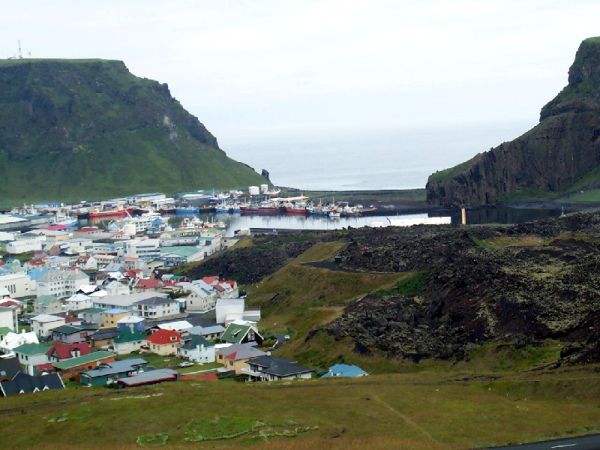
![]()
![]()
![]()
![]()
Lava flowed into the town from the right, burying many houses
![]()
![]()
![]()
![]()
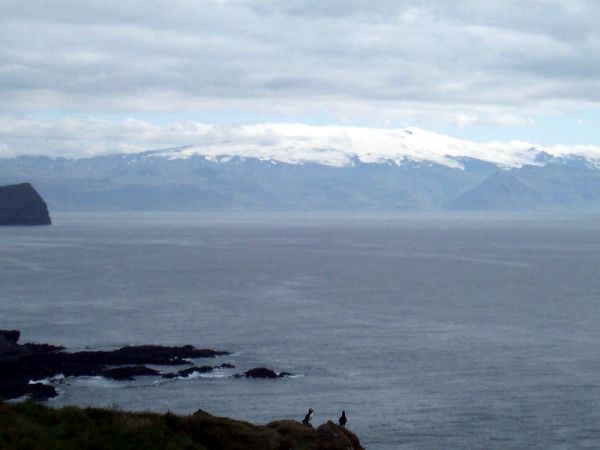
![]()
![]()
![]()
![]()
A view across the sea to the Mýrdalsjökull glacier on the mainland. And some puffins
![]()
![]()
![]()
![]()
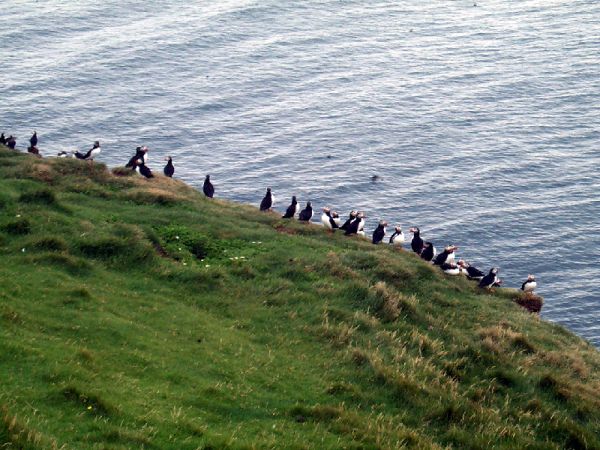
![]()
![]()
![]()
![]()
Yet more puffins. The Westman Islands is home to about 7 million of them. The locals keep the population down by catching and eating a hundred thousand a year
Next stop on the tour was at a site that overlooks a cove in the harbour entrance in which Keiko the killer whale (star of the Free Willy) films is kept. Scientists are attempting to integrate him back into the wild but funnily enough, having been kept in captivity for twenty years he finds that having to actually chase and kill his food is a bit of a drag and has refused to join the pods of wild killer whales that live in the area. As a chap on our tour said - I bet the filmmakers wish they had used a rubber whale instead.
![]()
![]()
![]()
![]()
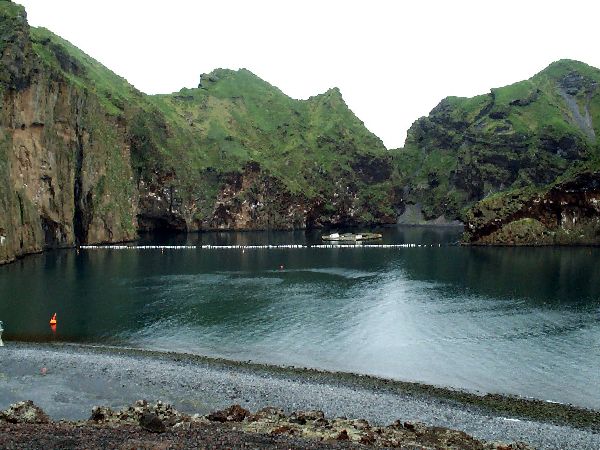
![]()
![]()
![]()
![]()
The home of the best fed killer whale in the world
The tour moved on the west side of the island. From there your can see the island of Surtsey which emerged from the sea in 1963 following an underwater volcanic eruption. The public is banned from the island as scientists study how life occupies such sterile ground. Now the island is home to 40 species of birds and plants.
![]()
![]()
![]()
![]()
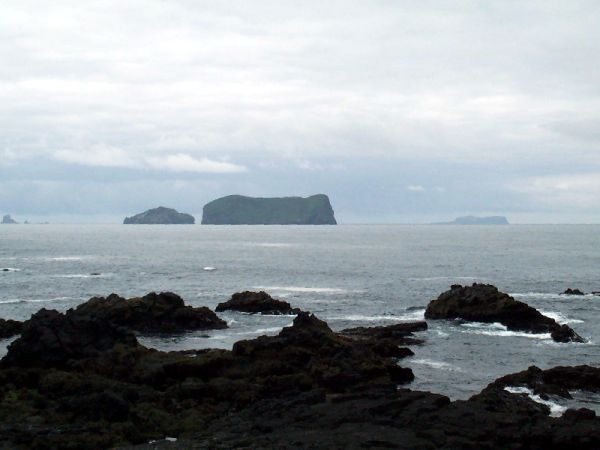
![]()
![]()
![]()
![]()
Surtsey is in the distance on the right
![]()
![]()
![]()
![]()
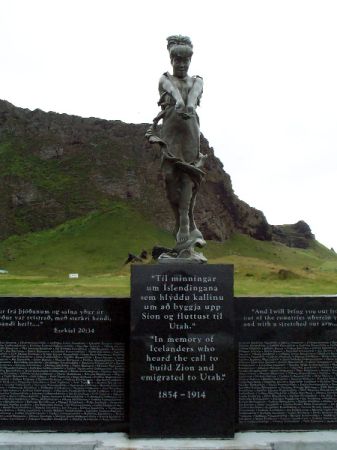
![]()
![]()
![]()
![]()
A statue erected by the Mormon church. You approach it from the side where it looks like a pile of junk, but it's quite nice from the front
After the bus tour we took a boat trip around the island. You get to see puffins actually in action, swimming and diving for fish instead of just sitting on cliffs. You also see the 1973 eruption lava from the sea. Twice the boat actually goes into caves in the cliffs.
![]()
![]()
![]()
![]()
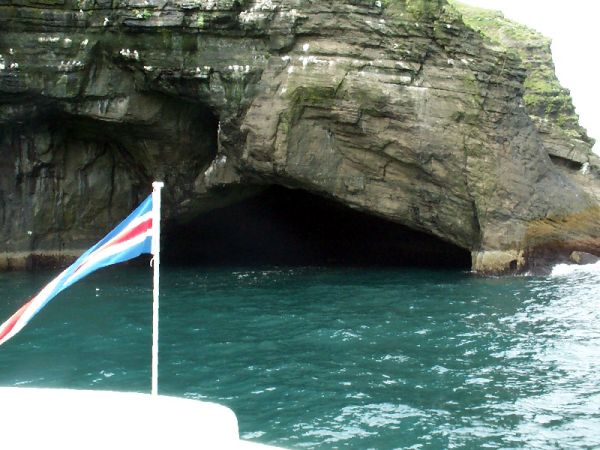
![]()
![]()
![]()
![]()
From the outside looking in...
![]()
![]()
![]()
![]()
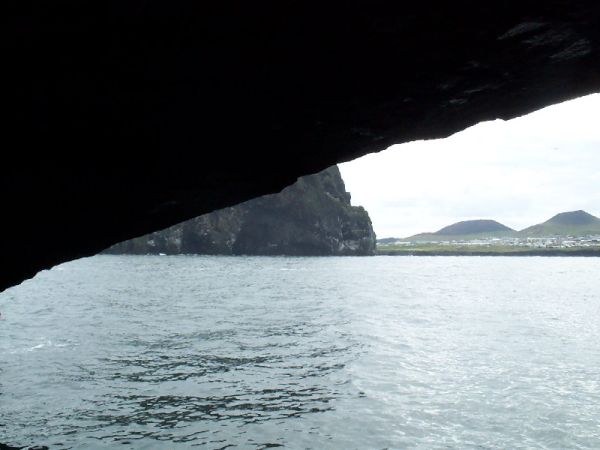
![]()
![]()
![]()
![]()
... and from the inside looking out to the town
After the boat tour we had several hours free to explore the town before the flight back to Reykjavík. The Natural History museum is well worth a visit. It has stuffed examples of most of the bird life that visits the islands. The aquarium has some impressive tanks with large fish like cod and some very grumpy looking catfish. The town library also has a small display of the 1973 eruption.
Down by the entrance to the harbour is a small wooden folk church although it's actually a replica donated by the Norwegian government. The cannon outside is to commemorate pirate raids on the islands. During one particular raid Algerian pirates carried off over a third of the islands population into slavery. The pirates bypassed the defences of the town (centred on the harbour entrance) by landing on the south of the island and walking to the town.
![]()
![]()
![]()
![]()
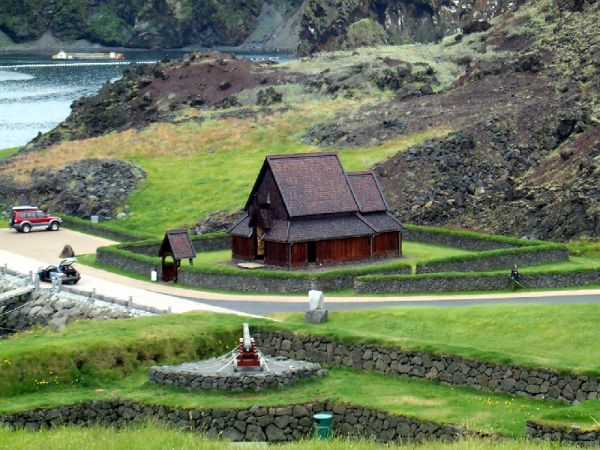
![]()
![]()
![]()
![]()
Sort of like the Maginot Line of its day
![]()
![]()
![]()
![]()
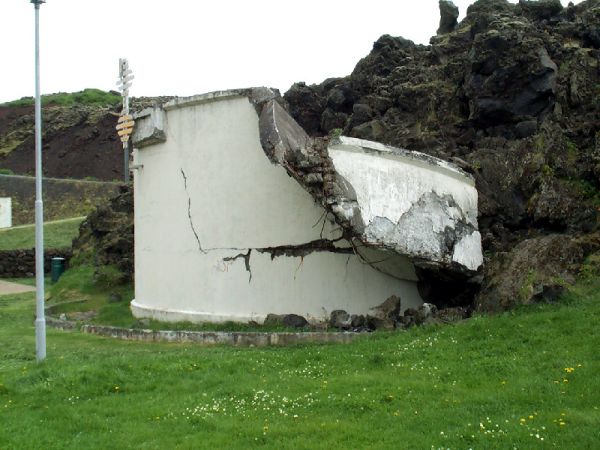
![]()
![]()
![]()
![]()
This oil storage tank was destroyed by the lava
Whilst waiting for the bus to take us back to the airport we enjoyed a coffee and a sticky cake in a bakery off the town square. We took off for Reykjavík at half past five. For the flight back we flew in an ATR-42, coincidentally with the same stewardess as the flight from Akureyri several days ago.
![]()
![]()
![]()
![]()
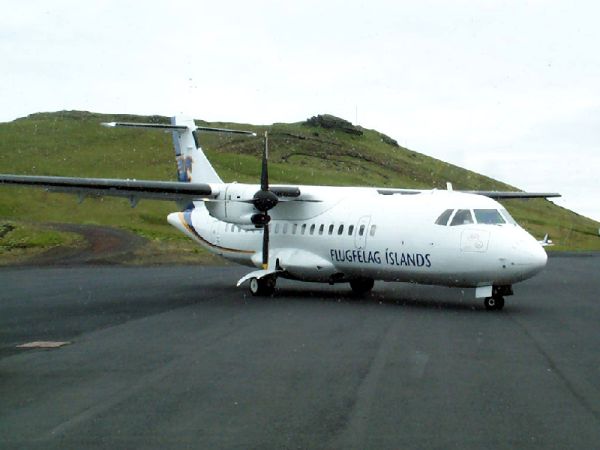
![]()
![]()
![]()
![]()
Our plane for the flight home pulling up at the terminal building at Heimaey
Upon arrival at Reykjavík airport we got a taxi back to the hotel. It had been a good day trip; well worth taking.